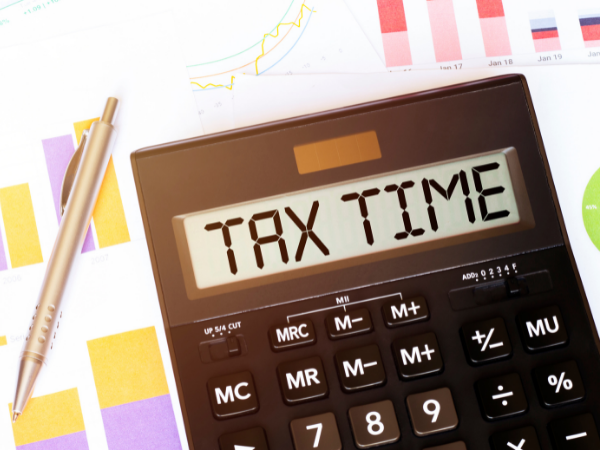As a firm director, you must ensure taxes and employee benefits are filed and paid on time. If you are a current or past corporate director, you may be held personally responsible for the payment of any liabilities that your company has failed to pay on time.
Why do directors face punishments?
Directors are personally responsible for the following debts of their companies:
- Pay-as-you-go withholding (PAYGW)
- Goods and Services Tax (GST)
- Super guarantee charge (SGC).
Director penalties refer to these sums for which you are personally responsible. After you have been served with a director penalty notice, they can come after you for the owed penalties.
Becoming a new company Director
Verify if the firm has any PAYGW, GST, or SGC obligations that have yet to be paid or recorded before accepting a position as a director. Once you receive the director position at a corporation, you will be held personally responsible for any outstanding debts.
Suppose within the first 30 days of your appointment as a director. You take one of the following actions to ensure that the company complies with applicable laws and regulations. In that case, you will not be personally responsible for any director fines due before your appointment.
- settles all outstanding sums due for PAYGW as of April 1, 2020; net GST as of April 1, 2020 (including luxury vehicle tax (LCT) and wine equalisation tax (WET) amounts; and SGC as of April 1, 2012;
- makes an administrator appointment under sections 436A, 436B, or 436C of the Corporations Act of 2001
- assigns a specialist in small-business reorganisation by Section 453B of said Act
- shows signs of winding up (within the meaning of the Corporations Act 2001).
A director who resigns within the 30-day grace period is still responsible for any pre-appointment PAYG withholding, net GST, or SGC liabilities incurred by the firm.
Suppose you are a director of a business, a registered Australian body, a registered foreign company, or an Aboriginal and Torres Strait Islander corporation. In that case, you must apply for a director identification number External Link (director ID).
Once you become a director
As a director, you’ll make sure the company pays its PAYGW, net GST, and SGC in full and on time.
You may be liable for director fines if the firm fails to file and pay the following.
- PAYGW on the due date,
- Net GST (together with LCT and WET amounts) by the due date, and
- Suppose the company needs to contribute to its workers’ superannuation funds by the deadline. In that case, it must file a superannuation guarantee declaration (SGD) and pay any related SGC liability.
A director penalty is a parallel liability.
If there is more than one director at the company, they will likely have to pay the same amount.
This is due to the similarity between corporate liability (what the corporation owes) and director penalty liability.
Depending on their situation, they may divide the director penalties evenly among the directors when they recover the fines.
You are no longer a director.
Director fines for liabilities of the firm that exist at the time of your resignation as a director are as follows:
- were due before the date you resigned
- were due after you gave notice
- For PAYGW and net GST (including LCT and WET), the first withholding event in the reporting period happened before your resignation.
- For SGC liabilities, the date the charge was due.
If you resigned as a director before:
- the first withholding event in that period for PAYGW and net GST. You will also be responsible for any unpaid liabilities for reporting periods that started while you were a director.
- the date the SGC became due. You will also be responsible for any unpaid liabilities for reporting periods that began while you were a director.
How do they recover director penalties?
Director penalty notices
The warning they must provide you to recoup the company’s unpaid amounts is a Director penalty notice (DPN).
The message specifies the overdue sums and your possible waiver alternatives.
They can get their money back for the director’s fine by doing the following:
- Sending garnishee notices
- Deducting Director Penalties from Tax Credits
- Starting legal recovery proceedings against you to get back the director penalty.
The DPN will be sent to the current director’s address as listed in their ASIC profile (ASIC). If you don’t keep this address current, they will use the last one they have on file for you.
As of the date of mailing (or leaving the DPN at the location recorded with ASIC), you are considered to have received the notification.
How a parallel liability works
Once DPNs have been issued, recovery action can begin or be resumed against each director because these penalties are concurrent.
The Commissioner can go after the debtor in one of two ways:
- the company
- the directors.
The director penalty amount for the other directors and the company’s equivalent obligation for the same reporting period will be reduced by any payment or credit applied to the company’s account or to the director’s account to decrease the penalty.
Remittance of the director penalty
PAYGW and net GST
Whether or whether a director’s penalty can be waived depends on when they were informed of the PAYGW and net GST payable.
Debts disclosed within the required time frame of three months
If the firm does one of the following within three months of the due date (or, in the case of new directors, within three months of the date of their appointment), the penalty will be waived:
- Making a complete payment on a debt
- the appointment of an administrator under Part 436A, Part 436B, or Part 436C of the Corporations Act 2001
- using Section 453B of that Act to appoint a small business restructuring practitioner
- the process of dissolving the business is underway (within the meaning of the Corporations Act 2001).
Reporting of liabilities three months after the original due date.
If the unpaid amount of PAYGW or net GST:
- is reported more than 3 months after the due date (or, for new directors, more than 3 months after their appointment), The only option to get rid of the director penalty is to pay up the entire loan.
- after 3 months, the director penalty associated with it cannot be waived except by full payment.
SGC amounts
When a director’s penalty is forgiven for SGC, it all comes down to when they were informed of their SGC payout.
The SGC penalty can be waived if the business meets one of the following conditions by the SGC statement due date:
- paying the debts
- the appointment of an administrator under Part 436A, Part 436B, or Part 436C of the Corporations Act 2001
- using Section 453B of that Act to appoint a small business restructuring practitioner
- It’s time to start closing down operations at the corporation (within the meaning of the Corporations Act 2001).
The only way to get rid of the amount is to pay the debt in full if:
- The amount of the SGC obligation that has not been paid is disclosed late.
- Some of the liability is not reported.
After they give you a Director Penalty Notice
You have 21 days from the time they give you a DPN to:
- make full restitution of all fines owed
- Communicate with them and try to work out a payment plan for the business’s debt; they may still apply for your credits as a reduction of this obligation.
If the preceding does not occur, they may recommence legal action against you to recover the director penalty amounts.
Estimates
The corporation may estimate the underpaid and overdue PAYGW, net GST, or SG amounts if it fails to submit these liabilities by the due date.
These projected costs are subject to the director’s penalties in the bylaws.
The date the company receives the estimated notice is the date on which the estimate is due and payable.
Estimates of PAYGW, net GST, or SGC are not included in any financial statements.
Defence to a Director Penalty Notice
Director liability for fines is specified in the director penalty regime. You can submit a request for review of a potential defence to your director penalty before any legal recovery actions are initiated.
If the following conditions are met, you will have a defence and will not be subject to a director penalty:
- you were unable to contribute to the company’s administration during the applicable period for reasons of illness or other good cause (and it would have been unreasonable to expect you to do so).
- You took all reasonable steps to ensure one of the following happened unless there were no reasonable steps you could have taken.
- The company paid what was still owed.
- The company has a new administrator
- The corporation has hired a specialist in small business reorganisation.
- The board of directors started closing down the business (within the meaning of the Corporations Act 2001)
- the business took reasonable care in applying the Superannuation Guarantee (Administration) Act 1992 and considered it as applying in a way that could be fairly argued to conform with the law and to the extent that an unpaid SGC liability existed.
The courts have:
- ruled that these defences must be shown for the whole time the director was required to do something.
- ruled that, as a director, you can’t say that you relied on others (like other directors or professional advisors) to ensure your obligation was met.
- Came to the conclusion that the natural interpretation of the situation is that the combined defences need to cover the entire time period between when the duty wasn’t performed on the due date and when the notice expired (Canty v Deputy Commissioner of Taxation [2005] NSWCA 84).
If a director doesn’t take part in running the company, this is usually a breach of duty, whether the director knows this or not (DCT v Lesley Frances Robertson [2009] NSWSC 597).
A written explanation of your DPN defence must be filed with the Commissioner. It should include everything that can be used to prove the defendant’s claims.
After submitting your application, you will be able to either:
- Ask your tax professional to file the form through Online services for agents
- mail it





